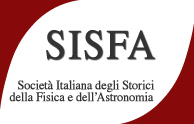Speaker
Description
The Italian physicists who devoted themselves to the study of solid-state physics in the early post-war period could not rely on a solid cultural heritage such as that left by Fermi and Rossi in the fields of nuclear, subnuclear, and cosmic ray physics.
Solid state physics in Italy resulted from a polycentric process stimulated by local situations and contacts with foreign research groups, primarily American.
Many factors hindered this process. Among them was a cultural, political, and industrial context unconcerned with a discipline whose theoretical foundations and possible technical applications appeared uncertain, the disciplinary formation of new physicists until based on a curriculum established in 1936, and the scarce financial support.
The topics studied in those years covered many fields: magnetic properties of materials (Torino), color centers in alkali halides (Pavia, Milano), semiconductors (Roma, Pavia), electron magnetic resonance (Palermo), imperfections in solids (Milano, Ispra), neutron diffraction (Roma, Ispra), and superconductivity (Genova).
On the theoretical side, the main contributions were to the theory of bands in semiconductors and to the structure and defects of alkali halides (Pavia).

